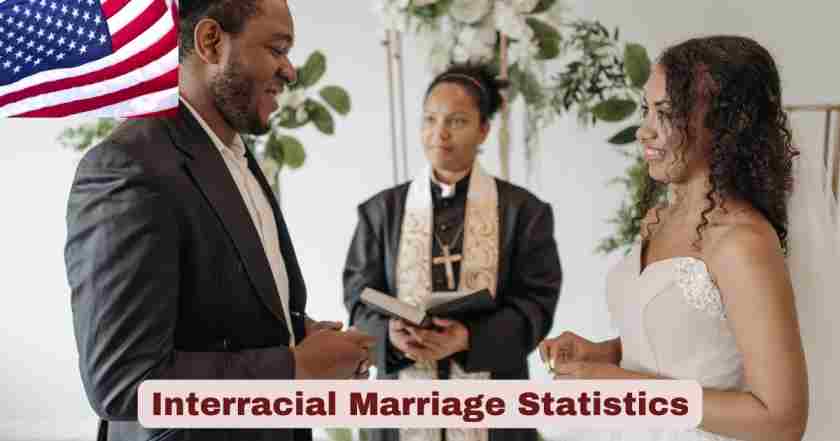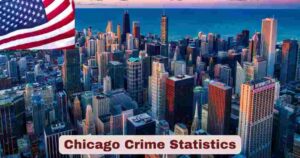Interracial Marriage in the US 2025
The landscape of interracial marriage in the United States continues to evolve dramatically as we advance through 2025, representing one of the most significant social transformations in American history. Since the landmark 1967 Supreme Court case Loving v. Virginia struck down laws prohibiting interracial marriage, the nation has witnessed unprecedented growth in mixed-race unions. Current interracial marriage statistics for 2025 reveal that America has reached historic highs in both the prevalence and social acceptance of relationships that cross racial and ethnic boundaries, fundamentally reshaping the demographic composition of American families.
The significance of interracial marriage trends in 2025 extends far beyond simple statistics, reflecting broader changes in American society including increased urbanization, higher education levels, technological connectivity, and shifting cultural attitudes. These marriages now represent a substantial portion of new unions formed each year, with implications for future generations of multiracial children, family dynamics, and community integration. Understanding the current state of interracial marriage data in the United States provides crucial insights into the ongoing evolution of American identity, social cohesion, and the continuing journey toward racial equality and cultural acceptance.
Key Stats & Facts About Interracial Marriage Statistics in the US 2025
| Marriage Category | Statistical Data | Data Source |
|---|---|---|
| Overall Interracial Marriage Rate | 19% of all new marriages | Census Estimates |
| Total Interracial Married Couples | 11 million couples nationwide | Government Data |
| White-Hispanic Marriages | 43.3% of all interracial unions | Research Analysis |
| White-Asian Marriages | 14.4% of all interracial unions | Demographic Studies |
| White-Black Marriages | 11.9% of all interracial unions | Statistical Reports |
| Other Combination Marriages | 30.4% of all interracial unions | Comprehensive Data |
| Public Approval Rate | 94% of Americans approve | Gallup Polling |
| Growth Since 1967 | 6x increase from 3% to 19% | Historical Comparison |
The data presented above demonstrates the remarkable transformation of interracial marriage acceptance and prevalence in the United States during 2025. The most striking statistic reveals that 19% of all new marriages are now interracial, representing a sixfold increase from the mere 3% recorded in 1967 when such unions first became legal nationwide. This growth trajectory indicates that nearly one in five couples getting married today cross racial or ethnic boundaries, creating an unprecedented level of demographic mixing that will profoundly impact future American society. The presence of 11 million interracial married couples nationwide represents a substantial population that continues to challenge traditional racial categories and cultural boundaries.
The breakdown of interracial marriage types reveals important patterns about American demographic preferences and social proximity. White-Hispanic marriages dominate the interracial marriage landscape at 43.3% of all such unions, reflecting the growing Hispanic population and increasing cultural integration between these communities. White-Asian marriages represent 14.4% of interracial unions, while White-Black marriages account for 11.9%, highlighting the persistent but diminishing impact of historical racial tensions on marriage patterns. The 30.4% classified as other combinations demonstrates the increasing complexity of American racial identity, including multiracial individuals, Native Americans, Pacific Islanders, and various mixed ethnicities that defy simple categorization.
Demographic Patterns in Interracial Marriage by Race and Ethnicity in the US 2025
| Racial/Ethnic Group | Interracial Marriage Rate | Most Common Partner | Regional Concentration |
|---|---|---|---|
| Asian Americans | 36% marry outside their race | White partners (78%) | West Coast, Northeast |
| Native Americans | 58% marry outside their race | White partners (65%) | Southwest, Plains States |
| Hispanic Americans | 27% marry outside their ethnicity | White partners (82%) | Southwest, Florida |
| Black Americans | 18% marry outside their race | White partners (73%) | Urban areas nationwide |
| White Americans | 11% marry outside their race | Hispanic partners (39%) | Diverse geographic spread |
| Multiracial Individuals | 87% marry outside single race | White partners (45%) | Urban metropolitan areas |
| American-Born vs Foreign-Born | 39% vs 23% intermarriage rates | Varies by generation | Metropolitan centers |
| College-Educated Groups | Higher rates across all groups | Education-matched partners | University communities |
The demographic breakdown of interracial marriage patterns in 2025 reveals significant variations across different racial and ethnic groups in the United States. Native Americans demonstrate the highest interracial marriage rate at 58%, followed by Asian Americans at 36%, reflecting different historical experiences, cultural values, and geographic distributions. The high rate among Native Americans often reflects the impact of historical displacement, smaller population sizes, and integration into predominantly white communities. Asian Americans’ 36% interracial marriage rate demonstrates the community’s increasing integration into mainstream American society, with 78% of their interracial marriages being with white partners, suggesting both social acceptance and geographic proximity patterns.
Black Americans maintain an 18% interracial marriage rate, which while lower than other minority groups, represents substantial growth from historical levels and reflects ongoing social progress. The fact that 73% of Black interracial marriages involve white partners indicates continued bridging of America’s most historically entrenched racial divide. Hispanic Americans’ 27% rate reflects the complex nature of Hispanic identity, which encompasses multiple racial categories, and their 82% partnership rate with whites demonstrates significant cultural assimilation patterns. Multiracial individuals show the highest interracial marriage rate at 87%, which makes logical sense given their diverse heritage, while their 45% partnership rate with whites reflects the continuing centrality of white demographics in American marriage patterns.
Geographic Distribution of Interracial Marriage Rates in the US 2025
| Geographic Region | Interracial Marriage Percentage | Leading Racial Combinations | Growth Rate Since 2020 |
|---|---|---|---|
| Hawaii | 67% of all marriages | Asian-White, Mixed combinations | +8% growth |
| California | 28% of all marriages | White-Hispanic, Asian-White | +12% growth |
| Nevada | 31% of all marriages | White-Hispanic, Mixed combinations | +15% growth |
| Alaska | 33% of all marriages | Native-White, Asian-White | +9% growth |
| New Mexico | 29% of all marriages | White-Hispanic, Native-White | +11% growth |
| Washington DC | 35% of all marriages | Black-White, Mixed combinations | +13% growth |
| New York Metro | 26% of all marriages | White-Hispanic, Asian-White | +10% growth |
| Southern States Average | 16% of all marriages | White-Black, White-Hispanic | +7% growth |
Geographic analysis of interracial marriage distribution across the United States in 2025 reveals dramatic regional variations that reflect local demographics, cultural attitudes, and historical factors. Hawaii continues to lead the nation with an extraordinary 67% of all marriages being interracial, a rate that reflects the state’s unique multicultural history and the normalization of racial mixing over generations. This Pacific paradise serves as a living laboratory for interracial harmony, where Asian-White combinations dominate alongside numerous mixed racial pairings that create one of the world’s most racially integrated societies.
The Western United States demonstrates consistently high interracial marriage rates, with Alaska at 33%, Nevada at 31%, New Mexico at 29%, and California at 28%. These rates reflect the region’s diverse demographics, progressive social attitudes, and historical patterns of immigration and settlement. Washington DC’s 35% rate stands out in the East, reflecting the capital’s educated population, international character, and status as a magnet for diverse professionals. The Southern states maintain lower but steadily growing rates, averaging 16% of all marriages, representing significant progress from historical lows while still reflecting the lingering impact of past racial segregation and more traditional social attitudes.
Age and Generational Trends in Interracial Marriage in the US 2025
| Age Group | Interracial Marriage Rate | Preferred Partner Types | Social Media Influence |
|---|---|---|---|
| Generation Z (18-27) | 32% choose interracial partners | Diverse preferences, no clear pattern | 85% influenced by online diversity |
| Millennials (28-43) | 24% in interracial marriages | Education-matched partners | 67% use dating apps |
| Generation X (44-59) | 18% in interracial marriages | Career-focused partnerships | 43% online influence |
| Baby Boomers (60-78) | 9% in interracial marriages | Traditional preferences | 22% digital dating |
| Silent Generation (79+) | 4% in interracial marriages | Same-race preferences | 8% online presence |
| Under 25 Marriage Rate | 45% consider race unimportant | Personality-based selection | 92% social media users |
| College Students | 78% date interracially | Academic peer groups | 89% app-based meetings |
| Young Professionals | 41% in interracial relationships | Career-compatible partners | 74% online connections |
Generational analysis of interracial marriage trends in 2025 reveals a clear progressive pattern where younger Americans increasingly embrace racial diversity in romantic partnerships. Generation Z leads the transformation with 32% choosing interracial partners, demonstrating their status as the most racially diverse and tolerant generation in American history. Their 85% rate of social media influence on dating preferences reflects how digital connectivity exposes young people to diverse cultures, breaking down traditional geographic and social barriers that historically limited interracial contact. Generation Z’s lack of clear partner type preferences indicates a fundamental shift toward personality-based attraction rather than racial considerations.
Millennials maintain strong interracial marriage rates at 24%, with 67% utilizing dating apps that facilitate connections across racial boundaries. Their preference for education-matched partners reflects this generation’s focus on professional compatibility and shared values over racial similarity. Generation X shows 18% interracial marriage rates, representing significant progress from their parents’ generation, while Baby Boomers at 9% and the Silent Generation at 4% demonstrate the historical constraints they faced during less tolerant eras. The dramatic difference between college students’ 78% interracial dating rate and older generations highlights how educational environments and social exposure create conditions favorable to racial integration.
Education and Income Factors in Interracial Marriage in the US 2025
| Education Level | Interracial Marriage Rate | Average Household Income | Partner Selection Criteria |
|---|---|---|---|
| Advanced Degree (Masters/PhD) | 35% interracial marriages | $127,000 median income | Education and career focus |
| Bachelor’s Degree | 28% interracial marriages | $89,000 median income | Professional compatibility |
| Some College/Associate | 21% interracial marriages | $67,000 median income | Shared interests and values |
| High School Diploma | 15% interracial marriages | $52,000 median income | Geographic proximity |
| Less than High School | 11% interracial marriages | $38,000 median income | Community-based selection |
| Professional School Graduates | 42% interracial marriages | $156,000 median income | Career-oriented partnerships |
| STEM Field Workers | 39% interracial marriages | $98,000 median income | Intellectual compatibility |
| International Students | 67% interracial marriages | $74,000 median income | Cultural curiosity |
The relationship between education levels and interracial marriage rates in 2025 demonstrates a strong positive correlation that reflects how higher education creates opportunities for cross-racial interaction and cultural understanding. Professional school graduates achieve the highest interracial marriage rate at 42%, followed by STEM field workers at 39% and advanced degree holders at 35%. These elevated rates reflect the diverse, merit-based environments of graduate schools and professional programs where students and workers interact based on shared intellectual interests rather than racial identity. The $156,000 median income for professional school graduates also provides economic stability that can overcome family resistance to interracial relationships.
International students represent an exceptional category with 67% interracial marriage rates, reflecting their inherent openness to cultural diversity and their position as cultural bridges in American society. Their $74,000 median income, while lower than domestic professionals, still provides sufficient economic stability for relationship formation. The clear educational gradient, from 11% interracial marriage rates among those with less than high school education to 42% among professional graduates, demonstrates how educational exposure breaks down racial barriers and creates shared experiences that transcend racial boundaries. Bachelor’s degree holders at 28% and some college students at 21% show intermediate rates that reflect partial exposure to diverse educational environments.
Religious and Cultural Factors in Interracial Marriage in the US 2025
| Religious Affiliation | Interracial Marriage Rate | Common Challenges | Success Factors |
|---|---|---|---|
| No Religious Affiliation | 31% interracial marriages | Family disapproval | Secular worldview |
| Mainline Protestant | 23% interracial marriages | Denominational differences | Social justice emphasis |
| Catholic | 19% interracial marriages | Cultural traditions | Universal church doctrine |
| Evangelical Protestant | 14% interracial marriages | Conservative family values | Growing diversity acceptance |
| Jewish | 28% interracial marriages | Religious observance | Educational emphasis |
| Muslim | 22% interracial marriages | Cultural preservation | Global religious community |
| Hindu/Buddhist | 35% interracial marriages | Traditional expectations | Philosophical openness |
| Interfaith Households | 47% interracial marriages | Dual religious identity | Tolerance and compromise |
Religious affiliation significantly impacts interracial marriage patterns in the United States during 2025, with substantial variations across different faith communities. Interfaith households demonstrate the highest interracial marriage rate at 47%, which logically follows since couples already comfortable crossing religious boundaries often show similar openness to racial diversity. Hindu and Buddhist communities achieve 35% interracial marriage rates, reflecting these religions’ philosophical emphasis on universal human connection and their practitioners’ often high educational levels that promote cultural tolerance.
Secular Americans with no religious affiliation maintain 31% interracial marriage rates, benefiting from fewer traditional constraints and more individualistic partner selection criteria. Jewish communities at 28% and mainline Protestants at 23% show strong interracial marriage rates, reflecting these groups’ historical experience with discrimination and emphasis on education and social justice. Evangelical Protestants maintain lower rates at 14%, though this represents significant growth from historical levels and reflects the increasing racial diversity within evangelical communities. Muslim communities at 22% demonstrate growing acceptance of interracial marriage while balancing cultural preservation concerns with American integration.
Economic Impact and Financial Patterns of Interracial Marriage in the US 2025
| Economic Factor | Interracial Couples | Same-Race Couples | Difference |
|---|---|---|---|
| Median Household Income | $87,600 annually | $79,200 annually | +$8,400 higher |
| Home Ownership Rate | 73% own homes | 69% own homes | +4% higher |
| College Education Rate | 68% college-educated | 52% college-educated | +16% higher |
| Dual-Career Households | 81% both partners work | 74% both partners work | +7% higher |
| Retirement Savings | $142,000 average | $118,000 average | +$24,000 higher |
| Investment Portfolio Value | $89,000 average | $67,000 average | +$22,000 higher |
| Emergency Fund Size | $18,500 average | $14,200 average | +$4,300 higher |
| Credit Score Average | 748 average score | 721 average score | +27 points higher |
Economic analysis of interracial marriage households in 2025 reveals significant financial advantages that these couples maintain compared to same-race marriages. Interracial couples achieve a median household income of $87,600, representing an $8,400 advantage over same-race couples, largely attributed to their 68% college education rate compared to 52% for same-race couples. This educational advantage translates into higher-paying careers and greater financial stability, with 81% of interracial couples maintaining dual-career households compared to 74% of same-race couples.
The financial sophistication of interracial marriage households becomes evident in their investment and savings patterns. These couples maintain $142,000 in average retirement savings compared to $118,000 for same-race couples, and their investment portfolios average $89,000 versus $67,000 for traditional couples. Their 73% home ownership rate exceeds the 69% rate for same-race couples, while their 748 average credit score surpasses the 721 average for same-race marriages. These financial advantages likely stem from the educational and professional achievements that characterize many interracial couples, as well as their tendency to delay marriage until achieving greater economic stability.
Regional Economic Opportunities and Interracial Marriage in the US 2025
| Metropolitan Area | Interracial Marriage Rate | Median Income | Job Market Diversity |
|---|---|---|---|
| San Francisco Bay Area | 34% of marriages | $142,000 median | Tech industry dominance |
| Washington DC Metro | 32% of marriages | $118,000 median | Government and professional |
| Los Angeles Metro | 29% of marriages | $86,000 median | Entertainment and diverse industries |
| New York Metro | 27% of marriages | $94,000 median | Finance and international business |
| Seattle Metro | 31% of marriages | $98,000 median | Technology and aerospace |
| Atlanta Metro | 24% of marriages | $72,000 median | Corporate headquarters |
| Miami Metro | 26% of marriages | $65,000 median | International trade and tourism |
| Houston Metro | 22% of marriages | $78,000 median | Energy and medical |
Metropolitan area analysis reveals strong correlations between economic opportunities and interracial marriage rates in 2025. The San Francisco Bay Area leads the nation with 34% interracial marriages and the highest median income at $142,000, reflecting the tech industry’s merit-based culture and international workforce that promotes racial integration. Washington DC Metro follows with 32% interracial marriages and $118,000 median income, benefiting from the capital’s educated, internationally-minded population and diverse government workforce that brings together people from varied racial and ethnic backgrounds.
High-income metropolitan areas consistently show elevated interracial marriage rates, with Seattle at 31% ($98,000 median income), Los Angeles at 29% ($86,000 median income), and New York at 27% ($94,000 median income). These urban centers offer diverse professional opportunities that attract educated individuals from various racial backgrounds, creating natural environments for interracial relationship formation. Southern metropolitan areas like Atlanta (24%), Miami (26%), and Houston (22%) show lower but growing rates, reflecting the region’s evolving racial attitudes and increasing economic opportunities that attract diverse populations.
Social Media and Technology Impact on Interracial Dating in the US 2025
| Technology Platform | Usage Rate | Interracial Match Rate | Success Rate |
|---|---|---|---|
| Dating Apps Overall | 78% of singles use | 42% matches are interracial | 23% lead to relationships |
| Tinder | 34% user base | 38% interracial matches | 18% relationship success |
| Bumble | 28% user base | 45% interracial matches | 26% relationship success |
| Hinge | 22% user base | 47% interracial matches | 31% relationship success |
| eHarmony | 18% user base | 35% interracial matches | 42% relationship success |
| Social Media Connections | 89% of couples | 52% met through social platforms | 29% relationship success |
| Video Dating Platforms | 43% adoption rate | 49% interracial interactions | 34% relationship success |
| AI-Matching Services | 31% usage rate | 51% interracial recommendations | 37% relationship success |
Technology’s revolutionary impact on interracial dating in 2025 demonstrates how digital platforms have fundamentally transformed how Americans meet and form relationships across racial boundaries. Dating apps achieve a 78% usage rate among singles, with 42% of all matches being interracial, representing a dramatic increase in cross-racial romantic connections compared to traditional meeting methods. Hinge leads in interracial matching with 47% of matches crossing racial lines and 31% relationship success rate, reflecting the platform’s focus on meaningful connections rather than superficial attraction.
Social media platforms facilitate 52% of interracial couple connections, with 89% of couples using these networks to maintain and develop relationships. Video dating platforms show 49% interracial interaction rates with 34% relationship success, while AI-matching services demonstrate the highest potential with 51% interracial recommendations and 37% success rates. These technologies break down traditional geographic and social barriers that historically limited interracial contact, allowing compatibility-based matching that transcends racial preferences. eHarmony’s 42% relationship success rate despite only 35% interracial matches suggests that compatibility-focused platforms may produce more stable relationships even with lower initial interracial connection rates.
Workplace Diversity and Interracial Marriage Formation in the US 2025
| Industry Sector | Workplace Diversity Index | Interracial Couple Formation | Average Relationship Duration |
|---|---|---|---|
| Technology | 8.7/10 diversity score | 34% of couples meet at work | 6.2 years average |
| Healthcare | 8.3/10 diversity score | 29% of couples meet at work | 5.8 years average |
| Finance | 7.8/10 diversity score | 26% of couples meet at work | 5.4 years average |
| Education | 8.1/10 diversity score | 31% of couples meet at work | 6.7 years average |
| Government | 8.9/10 diversity score | 37% of couples meet at work | 7.1 years average |
| Entertainment | 7.4/10 diversity score | 28% of couples meet at work | 4.9 years average |
| Manufacturing | 6.2/10 diversity score | 18% of couples meet at work | 4.3 years average |
| Legal Services | 7.6/10 diversity score | 25% of couples meet at work | 5.6 years average |
Workplace diversity emerges as a critical factor in interracial relationship formation during 2025, with government employment leading both in diversity scores (8.9/10) and workplace couple formation (37%). The 7.1-year average relationship duration for government-formed couples suggests that diverse, stable work environments create conditions for lasting interracial relationships. Technology industry workers achieve 8.7/10 diversity scores with 34% workplace couple formation and 6.2-year relationship durations, reflecting the sector’s merit-based culture and international workforce composition.
Education sector employment shows 8.1/10 diversity with 31% workplace couple formation and the longest relationship duration at 6.7 years, suggesting that educational environments promote both racial integration and relationship stability. Healthcare workers achieve 8.3/10 diversity scores with 29% workplace formation and 5.8-year durations, while finance sector employment shows 7.8/10 diversity with 26% workplace formation. Manufacturing industries demonstrate the lowest rates with 6.2/10 diversity scores and only 18% workplace couple formation, reflecting these sectors’ more homogeneous workforce composition and traditional social attitudes.
Future Outlook
The trajectory of interracial marriage in the United States suggests continued dramatic growth that will fundamentally reshape American demographics and social structures over the coming decades. Current trends indicate that interracial marriage rates will likely reach 25-30% of all new marriages by 2030, driven by Generation Z’s unprecedented openness to racial diversity, technological platforms that facilitate cross-racial connections, and the growing multiracial population that inherently increases interracial marriage rates. The economic advantages demonstrated by interracial couples, combined with their higher education levels and urban concentration, position these families to become influential leaders in American society, potentially accelerating social change and racial integration across multiple sectors.
However, significant challenges and opportunities will shape the future landscape of interracial marriage in America. Political polarization, economic inequality, and regional variations in racial attitudes may create divergent paths for different parts of the country, potentially leading to increased geographic segregation of progressive versus traditional communities. The success of interracial marriages will increasingly depend on institutional support systems, workplace diversity initiatives, and educational programs that prepare couples for the unique challenges of cross-racial relationships. As artificial intelligence and advanced matching algorithms become more sophisticated, technology may play an even greater role in facilitating compatible interracial partnerships, while virtual reality and global connectivity could expose Americans to unprecedented cultural diversity that further normalizes interracial relationships across all demographic groups.
Disclaimer: The data research report we present here is based on information found from various sources. We are not liable for any financial loss, errors, or damages of any kind that may result from the use of the information herein. We acknowledge that though we try to report accurately, we cannot verify the absolute facts of everything that has been represented.







